#TradeData
Explore tagged Tumblr posts
Text
Vietnam imports
Dive deep into Vietnam Imports to understand what goods are being imported into the country. Gain insights into product categories, volume trends, and key import partners to drive strategic business decisions.
Visit here: https://www.vietnamexportdata.com/vietnam-import-data
0 notes
Text
Africa’s Import Market 2024-25: A Growing Hub of Opportunity 🌍📈
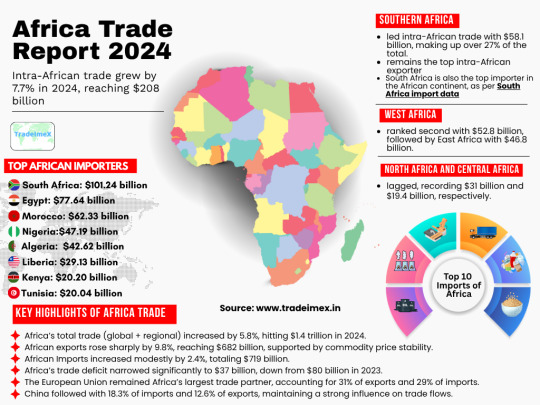
Did you know Africa imported $719 billion worth of goods in 2024, with projections hitting $800 billion in 2025? The top imports include mineral fuels, machinery, vehicles, and pharmaceuticals — all fueling the continent’s rapid growth.
South Africa, Egypt, Morocco, and Nigeria lead the pack as Africa’s biggest importers. Plus, intra-African trade jumped 7.7% in 2024 thanks to the #AfCFTA initiative, boosting regional business like never before.
However, with new US tariffs set for 2025, Africa is shifting its trade strategies to diversify and strengthen partnerships globally.
Explore the full story and trade insights here 👉 https://www.tradeimex.in/blogs/africa-imports-top-buyers-imports-by-country-2024-25
#AfricaImports#TradeData#AfCFTA#GlobalTrade#BusinessGrowth#AfricanEconomy#ImportExport#TradeInsights#AfricaBusiness
0 notes
Text
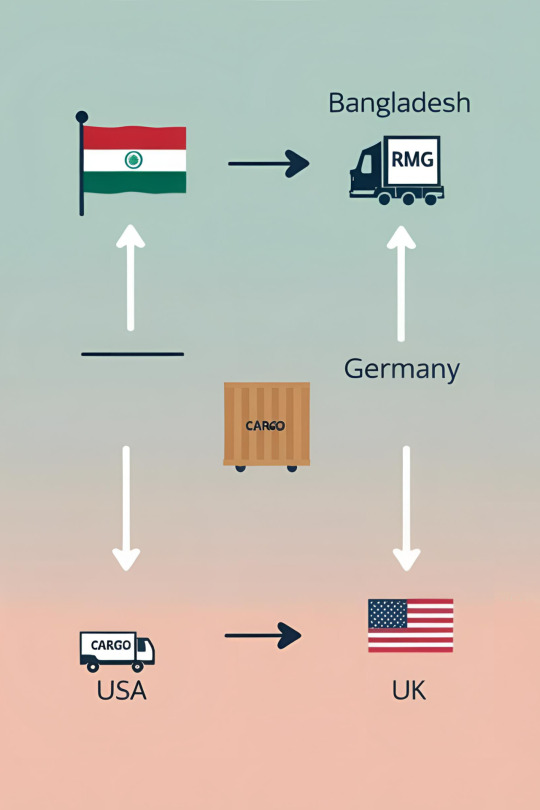
Bangladesh Trade Overview ✔️ RMG is the top export ✔️ Imports machinery, food, petroleum ✔️ Trades most with India, China, USA
Verified by The Trade Vision's EXIM data. 👉 Read Blog
1 note
·
View note
Text
Canadian Top 10 Exports: Key Products Driving Canada's Trade in 2025
Canada has a long history of dominating international trade, and its robust industrial sectors and abundance of natural resources make it a major player in the world market. Through industry specialization and innovation, Canada exports to expand its access to wider, more varied markets, generate income to cover export costs, and promote economic growth.
Read more: https://www.seair.co.in/blog/canadian-top-exports.aspx
0 notes
Text
How to Export Mangoes from India to the USA: A Complete Guide
India is the largest producer of mangoes in the world and exports a variety of mangoes to international markets, including the USA. The demand for high-quality mangoes has been increasing due to their rich taste and nutritional benefits. In this article, we will discuss the process of exporting mangoes from India to the USA, the market trends, and key importers.

Market Trends of Fresh Mangoes in the USA
The USA relies heavily on imports to meet its demand for fresh mangoes, as local production is limited to Florida, California, and Hawaii. While Mexico dominates the US mango market, India has been steadily increasing its share in mango exports. In the fiscal year 2023-24, India exported 32,104.09 metric tonnes of fresh mangoes worldwide, valued at INR 495.46 crores (USD 60.14 million). The export of mangoes to the USA from India grew by 19% compared to the previous year.
Key Mango Importers in the USA
Several companies in the USA import mangoes from India in large quantities. Some of the top Indian mango importers in the USA include:
A & P Intertrade Inc.
VLM Foods USA Limited
Dni Group LLC.
Spectrum Fruits Inc.
ITI Tropicals
Greenwood Associates Inc.
Clark Foods Inc. DBA American Bever
Vadilal Industries USA Inc.
Esu Farm LLC
To get a comprehensive list of Indian mango importers in the USA along with shipment details, traders can use Export Import Data Bank platforms like Eximpedia.app.
Major Varieties of Mangoes Exported to the USA from India
India exports different varieties of mangoes to the USA, each known for its unique taste and texture. The major types include:
Alphonso Mango (Hapus)
Totapuri Mango
Kesar Mango
Badami Mango
Banganapalli Mango (Safeda)
Rajapuri Mango
Chaunsa Mango
Among these, Alphonso mangoes are highly sought after due to their rich, creamy flavor. Kesar mangoes are known for their sweetness and aroma, while Totapuri mangoes are mainly used for mango pulp production.
Required Documents for Mango Export to the USA
Exporting mangoes from India to the USA requires obtaining several key documents, including:
Business Registration with MCA
Phytosanitary Certificate
GST Registration
APEDA Registration
Import Export Code (IEC)
CRES Certificate from the Spice Board of India
Food Safety and Standard Authority of India (FSSAI) Registration
These documents ensure compliance with Indian and US regulations, facilitating smooth trade transactions.
Step-by-Step Process to Export Mangoes from India to the USA
Step 1: Understanding the Market
Before exporting, conduct thorough market research to identify demand trends and pricing. Platforms providing India Import and Export Data and Export Import Data Bank can help traders analyze the latest trends and buyer preferences.
Step 2: Obtaining Export Documentation
To export mangoes from India to the USA, secure all necessary documents, including:
Certificate of Origin
Packing List
Tax Invoice
Commercial Invoice
Phytosanitary Certificate
These documents are crucial for customs clearance and ensuring compliance with export regulations.
Step 3: Understanding Mango HS Codes
HS Codes are essential for identifying mango shipments in international trade. For mango exports, the HS Code is 20079910. Traders can use Import Export Data to access updated statistics and port details.
Step 4: Finding Mango Buyers in the USA
After completing documentation, identify potential buyers using Import and Export Data India. Utilizing Export Import Data platforms helps exporters connect with verified buyers and expand their trade network.
Top Destinations for Mango Exports from India
Apart from the USA, India exports mangoes to several other countries, including:
Japan
New Zealand
Australia
South Africa
Saudi Arabia
Yemen Republic
Netherlands
Countries in the Middle East, such as Oman, Kuwait, Bahrain, and Qatar, also import Indian mangoes in significant quantities.
Global Mango Export Market
India is among the top global exporters of mangoes. The leading mango-exporting countries based on export value (in million USD) are:
Mexico: 575.36
Netherlands: 381.72
Brazil: 315.69
India: 148.36
United States: 48.23
Germany: 40.24
Burkina Faso: 27.63
Portugal: 27.22
South Africa: 17.18
United Kingdom: 12.82
India ranks fourth in global mango exports, with an export value of USD 148.36 million, about one-fourth of Mexico’s export value.
Special Guidelines for Exporting Mangoes to the USA
Exporters must comply with strict guidelines for mango shipments to the USA, including:
Implementing Good Agricultural Practices (GAP) for high-quality production.
Using hygienic, food-grade packaging that meets FDA regulations.
Ensuring accurate labeling per US import requirements.
Obtaining phytosanitary certification to confirm compliance with export regulations.
Submitting customs documentation on time for hassle-free export transactions.
Conclusion
Exporting mangoes from India to the USA presents lucrative opportunities for traders. However, the process requires thorough market research, proper documentation, and compliance with import regulations. By utilizing Export Import Data, Import Export Data, and India Import and Export Data, exporters can gain valuable insights and expand their business. Platforms like Eximpedia.app offer updated trade data and market intelligence to help exporters make informed decisions.
For a complete list of Indian mango exporters and buyers in the USA, consult reliable Export Import Data platforms. Connect now to explore global trade opportunities and maximize your mango export business!
#MangoExport#ExportBusiness#IndianMangoes#USAMangoImport#TradeData#ExportToUSA#InternationalBusiness
0 notes
Text
Understanding the Global Soda Ash Import Market
Soda ash, also known as sodium carbonate, is a vital chemical with a rich history spanning over a thousand years. It ranks as the tenth most consumed inorganic chemical globally, playing a crucial role in various industries, including detergent manufacturing, glass production, and water treatment. With a growing market anticipated to reach $38.2 billion by 2032, it’s essential to explore the dynamics of the soda ash import market, particularly in key regions such as South America and Southeast Asia.
Key Players in the Soda Ash Market
Among the leading suppliers of dense soda ash are GHCL Limited, Ciner Resources Corporation, and Shreenathji Chemicals. In India, the primary importers of soda ash include Drita Technologies Pvt. Ltd., Mahalaxmi Dyes & Chemicals Ltd., and Delta Chemicals. These companies play a pivotal role in meeting the demand for soda ash in various applications, from manufacturing lithium batteries to controlling pH levels in water treatment processes.

Soda Ash Import Data Insights
In 2023, India emerged as the world's top soda ash importer, with 18,747 shipments recorded. This substantial import volume underscores the country's growing industrial sectors, especially in construction and chemicals. The majority of these imports come from China, Romania, and Kenya, with Vietnam and Bangladesh following closely in terms of import volume.
The import landscape is characterized by a network of 634 buyers sourcing from 730 suppliers of dense soda ash in India. The corresponding HS codes for soda ash include 28362020 for light disodium carbonate and 28362010 for dense disodium carbonate, among others.
Growth Projections and Market Drivers
The global soda ash market is projected to grow at a compound annual growth rate (CAGR) of 4.1% from 2024 to 2031, reaching a valuation of USD 26.64 billion by 2031. Factors driving this growth include:
Increasing Construction Activity: With urbanization and infrastructure development on the rise, the demand for soda ash in construction-related applications is set to grow.
Expanding Chemical and Detergent Production: The surge in the production of glass and chemicals, particularly in emerging markets like Southeast Asia and Latin America, is significantly contributing to the demand for soda ash.
Sustainability Initiatives: As industries pivot toward sustainable practices, advancements in production methods are making soda ash manufacturing more environmentally friendly, further boosting its market appeal.
Leading Suppliers and Importers
When considering suppliers of dense soda ash, notable names include:
Shreenathji Chemicals
Ciner Resources Corporation
GHCL Limited
Novella Corporation
Akshar Chemicals
These suppliers are integral to ensuring the reliability and quality of soda ash for various industrial applications.
In India, key importers also encompass companies like Aimchem Ingredients Pvt. Ltd., Belami Fine Chemicals Pvt. Ltd., and Sumitomo Chemical India Pvt. Ltd. This diverse network highlights the competitive landscape in the Indian soda ash import market.
Conclusion
The soda ash market is experiencing robust growth driven by rising local demand, especially in India. However, importers must navigate challenges such as price competition and potential market surpluses. A strategic approach, involving careful supplier selection and market trend analysis, will be crucial for success in this dynamic landscape.
For those looking for detailed insights on soda ash imports, the platform Exportimportdata.in offers comprehensive data-driven resources, including information on suppliers, importers, and market trends. As the soda ash industry continues to evolve, staying informed will be vital for stakeholders looking to capitalize on this essential chemical’s growing market.
If you have any questions or need further insights into soda ash suppliers or import data, feel free to reach out for expert guidance and a free live demo!
#SodaAsh#SodiumCarbonate#ChemicalIndustry#ImportMarket#SodaAshSuppliers#SodaAshImporters#GlobalTrade#IndustrialChemicals#DetergentManufacturing#GlassProduction#WaterTreatment#SustainablePractices#MarketGrowth#ChemicalExports#IndiaImports#APACMarket#TradeData#ExportImport#SupplyChain#MarketInsights
0 notes
Text
Japan's Export Growth Surges as Global Demand Soars #exportgrowth #globaldemand #Japanexports #Japanimports #tradedata
0 notes
Text
Ethiopia, with a vibrant economy and strategic location, is a promising global trade hub. Importing goods offers lucrative prospects, but understanding associated costs is crucial. This article on "How much does it cost to import something into Ethiopia?" explores factors impacting import costs and introduces valuable resources like Ethiopia Export Data, Ethiopia Import Data, and the Ethiopia Importers List.
#export#import#trade#tradedata#datadriven#marketresearch#exportdata#importdata#ethiopia#globaltrade#globaltradedata#ethiopiaImportData#ethiopiaImportersList#ethiopiaExportData#internationaltrade
0 notes
Text
https://www.wikifx.com/en/newsdetail/202405249404287073.html?source=fre3
CFTC Fines JPMorgan $100M for Reporting Violations 👉JPMorgan admits to breaking CFTC rules, paying a $100 million fine for trade reporting lapses dating back to 2013. #CFTC #JPMorgan #ReportingViolations
JPMorgan discovered significant gaps in its order and trade data monitoring, some dating back to 2013. #TradeData #MonitoringGaps #FinancialRegulations
Read the complete details here: ┏━━━━━━━━━━━━┓ https://www.wikifx.com/en/newsdetail/202405249404287073.html?source=fre3
Choose WikiFX for unparalleled trust and reliability in forex trading! #WikiFX #ForexTrading #Trust #Reliability
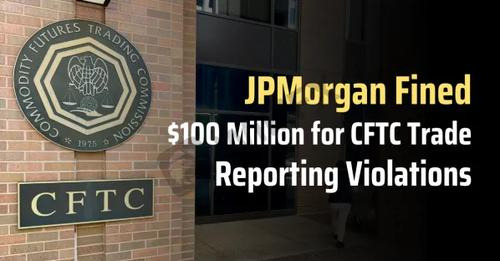
0 notes
Text
Vietnam’s Record-Breaking Import-Export Growth in 2025: A Deep Dive into the Nation's Trade Achievements
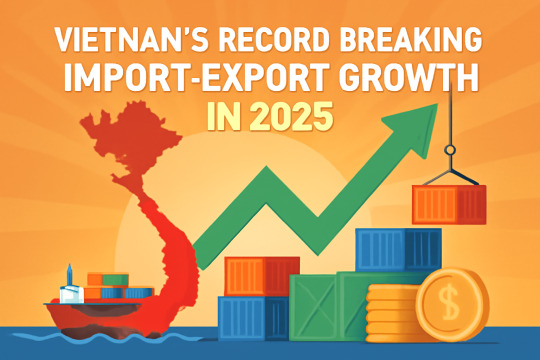
Vietnam's import-export sector has witnessed phenomenal growth in 2025, setting new records and solidifying the country's role as a significant player in global trade. With a diverse range of products, including electronics, textiles, and agricultural goods, Vietnam continues to attract international businesses looking to capitalize on its growth. This blog will explore the factors driving this success, the key products shaping the trade landscape, and the exciting opportunities available for businesses worldwide, check out our analysis at Vietnam Import-Export Trade Data 2025 Analysis.
Vietnam’s Record-Breaking 2025 Trade Turnover: What You Need to Know
Vietnam's trade turnover in 2025 has exceeded expectations, achieving new milestones that reflect its growing importance in the global marketplace. Here are the key figures:
Total Trade Value: Vietnam’s total trade turnover reached $700 billion in 2025, an impressive 15% year-on-year increase.
Exports: Exports alone amounted to over $370 billion, with significant growth in sectors like electronics and textiles.
Imports: Imports saw a surge, reaching nearly $350 billion, driven by demand for machinery, raw materials, and fuel to support the manufacturing boom.
This growth highlights Vietnam’s competitiveness and how it is becoming increasingly indispensable in the global trade ecosystem. For a deeper look at these figures and the driving forces behind this surge, refer to the Vietnam Import-Export Data Analysis.
Key Drivers Behind Vietnam’s Import-Export Success in 2025
Several factors have propelled Vietnam to this record-breaking year. These key drivers highlight why the country is witnessing such impressive trade growth:
A. Strategic Trade Agreements
Vietnam’s participation in various Free Trade Agreements (FTAs) has played a pivotal role in boosting its trade performance. The country’s partnerships with multiple global markets have opened new opportunities for exports and imports:
CPTPP (Comprehensive and Progressive Agreement for Trans-Pacific Partnership): As part of the CPTPP, Vietnam has gained better access to markets across the Asia-Pacific region. This agreement has helped enhance trade flows, especially in electronics and textiles (Source: ASEAN).
EVFTA (EU-Vietnam Free Trade Agreement): The deal with the European Union has reduced tariffs and opened up new channels for exporting agricultural products, electronics, and textiles to Europe (Source: European Commission).
RCEP (Regional Comprehensive Economic Partnership): Vietnam’s involvement in the RCEP has further expanded its ties with China, Japan, and South Korea, fostering deeper economic integration in Asia (Source: RCEP).
B. Growing Manufacturing Sector
Vietnam’s position as a low-cost and high-efficiency manufacturing hub is one of the central factors driving its trade growth. Large multinationals such as Samsung, Apple, and Nike have significantly increased their investments in Vietnam's manufacturing base.
According to The Financial Times, Samsung alone accounted for over $50 billion in Vietnamese exports in 2025 (Source: Financial Times).
This booming manufacturing sector has led to an export surge in electronics, garments, and machinery.
C. Improved Infrastructure and Logistics
Vietnam’s continued investment in modernizing its infrastructure has enhanced its ability to handle rising trade volumes. The expansion of ports, roads, and transportation systems has significantly reduced logistics costs, making it easier for Vietnam to export goods to global markets.
For instance, the Cai Mep International Terminal in Ho Chi Minh City is one of the fastest-growing ports in Southeast Asia and has helped enhance Vietnam's export capabilities (Source: Vietnam Ministry of Transport).
Key Export Products Driving Vietnam’s Trade Growth in 2025
Vietnam’s export portfolio is diverse, with several key products contributing to the record trade performance. The following sectors are the main drivers:
A. Electronics and Electrical Equipment
Vietnam has become a leader in electronics exports, driven largely by the smartphone and semiconductor industries. Companies such as Samsung and LG have established manufacturing facilities in Vietnam, leading to an explosion in exports of mobile phones, computers, and components.
Samsung accounts for over 20% of Vietnam's total export value, contributing significantly to the growth of the electronics sector (Source: Vietnam Ministry of Industry and Trade).
B. Textiles and Garments
Vietnam remains one of the world’s top textile and garment exporters, shipping products primarily to the U.S., European Union, and Japan. The country’s highly competitive labor force and well-established manufacturing infrastructure make it a key player in the global textile industry.
In 2025, textiles accounted for over $30 billion in export value, according to the Vietnam Textile and Apparel Association (VITAS) (Source: VITAS).
C. Agricultural Products
Vietnam's agricultural sector continues to perform well, with products like coffee, seafood, rice, and tropical fruits playing a central role in the country's exports.
Vietnam is the world's second-largest coffee exporter after Brazil, and its coffee exports reached over $3 billion in 2025 (Source: International Coffee Organization).
Top Imports into Vietnam in 2025
While Vietnam's exports are flourishing, the country also faces rising demand for imports. The following are the top categories driving Vietnam's import growth:
A. Industrial Machinery and Equipment
To sustain its industrial expansion, Vietnam imports a wide range of machinery, including manufacturing equipment, automotive parts, and construction machinery. These imports are crucial for powering the country's booming manufacturing sector.
Industrial machinery imports reached over $50 billion in 2025, according to the Vietnam General Department of Customs (Source: Vietnam Customs).
B. Raw Materials for Manufacturing
Vietnam relies heavily on imported raw materials, including steel, chemicals, and plastics, to support its thriving manufacturing industry.
C. Energy Products
Despite its growing energy production, Vietnam still imports significant amounts of crude oil and refined petroleum products. These are necessary for fueling its industrial base and meeting domestic energy needs.
The Global Impact of Vietnam’s Trade Growth
Vietnam’s success is also linked to broader global economic trends. The country’s integration into international trade networks has had a significant impact on neighboring economies, especially within the ASEAN region.
A. ASEAN’s Role in Trade Growth
As a member of the ASEAN Economic Community, Vietnam benefits from preferential trade agreements with neighboring countries. This regional collaboration has facilitated the flow of goods and services, supporting the rapid growth of Vietnam’s export market (Source: ASEAN Secretariat).
B. Global Supply Chain Shifts
The ongoing realignment of global supply chains is another key factor contributing to Vietnam’s trade boom. As companies diversify their manufacturing bases away from China, Vietnam has emerged as a favored destination for companies seeking cost-effective alternatives.
According to McKinsey & Company, Vietnam is projected to become one of the leading beneficiaries of global supply chain shifts (Source: McKinsey & Company).
Opportunities for Global Businesses in Vietnam
Vietnam’s rapidly growing trade market presents numerous opportunities for businesses across various sectors:
A. Sourcing and Manufacturing
Foreign businesses can take advantage of Vietnam’s low-cost labor, skilled workforce, and robust manufacturing infrastructure to produce goods at competitive prices.
B. Exporting to Vietnam
As the middle class in Vietnam continues to grow, there is increasing demand for luxury goods, consumer electronics, and international brands. Global businesses should consider entering the Vietnamese market to meet this demand.
C. Investment Opportunities
Vietnam’s expanding infrastructure offers ample opportunities for foreign investors, particularly in sectors such as logistics, ports, and transportation.
Challenges Vietnam Faces in Maintaining Trade Growth
While Vietnam’s trade performance in 2025 is impressive, several challenges remain:
A. Supply Chain Vulnerabilities
Global disruptions, such as the ongoing pandemic and geopolitical tensions, could impact Vietnam’s ability to maintain its impressive growth rate.
B. Environmental Sustainability
As international demand for eco-friendly products grows, Vietnam will need to adopt more sustainable practices in its manufacturing and export industries.
Future Outlook for Vietnam’s Trade Sector
Vietnam is poised for continued trade growth, thanks to its strategic location, expanding trade networks, and increasingly sophisticated manufacturing capabilities. As the world’s trade landscape evolves, Vietnam’s role will only become more important, and businesses should keep an eye on this dynamic market.
For more insights into Vietnam's trade data and future projections, check out our detailed report at Vietnam Import-Export Trade Data 2025 Analysis.
#tradeimex#globaltrade#tradedata#importexport#importexportdata#internationaltrade#global trade#vietnamtrade#vietnamimportdata#vietnamexportdata#vietnam#usa#pokemon
0 notes
Text
Nepal's foreign trade in the first nine ... #CentralBureauofStatistics #deficit #drop #exports #fiscalyearanalysis #fiscalyeartrade #foreigntradereport #importexportstatistics #importexporttrends #imports #Khabarhub #Nepaleconomy #Nepalforeigntrade #Nepaltradedeficit #Nepaltradeupdate #Nepaltradevolume #Nepals #percent #Tops #Trade #tradeanalysis #tradebalance #tradecomparison #tradedata #tradedeficit #tradedeficitdecrease #tradefigures #tradefiguresupdate #tradeperformance #tradestatistics #tradestatisticsreport #tradetrends #tradevolumedecrease #Trillion
0 notes
Text
How to Start an Import-Export Business in 2025: Profitable Ideas & Step-by-Step Guide
The import-export business plays a vital role in the global economy, facilitating the exchange of goods and services across borders. It enables countries to leverage their strengths in production while accessing essential products they lack. International trade fosters economic growth, creates employment, and enhances diplomatic relations among nations.
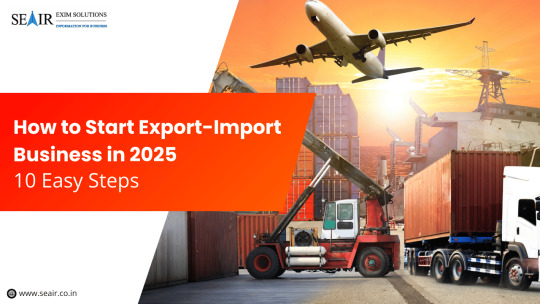
With the advancement of technology and digital trade platforms, the process of buying and selling goods internationally has become more streamlined. Platforms like Seair Exim Solutions provide traders with real-time data, helping businesses identify market opportunities, track shipments, and find reliable buyers and suppliers.
In this blog, we will explore the fundamentals of import-export businesses, discuss the profitability of this industry in 2025, and provide insights into key factors affecting global trade.
Understanding Import and Export Business
What is Importing and Exporting?
Importing refers to the process of bringing goods or services from another country into one’s own, whereas exporting is the act of selling goods or services to a foreign country. This trade is crucial for businesses looking to expand their reach and for consumers who benefit from a diverse range of products.
For example:
An Indian textile company exports handcrafted garments to customers in the United States.
A Bengaluru-based business imports premium coffee beans from Brazil to cater to local coffee shops.
How Imports and Exports Impact a Country’s Economy
The import-export business significantly influences a nation’s economy in the following ways:
Boosting GDP: Exporting high-demand products increases a country’s GDP by generating revenue from international markets.
Strengthening Foreign Exchange Reserves: Exports bring foreign currency, which strengthens economic stability.
Employment Generation: Increased demand for goods leads to job creation in manufacturing, logistics, and trade sectors.
Diversifying Markets: Businesses can mitigate risks by selling in multiple markets rather than relying solely on domestic demand.
Improving Quality Standards: Exposure to international markets compels businesses to enhance product quality to remain competitive.
Key Factors Influencing Global Trade
Several factors impact the success of an import-export business:
Trade Policies & Regulations: Tariffs, trade agreements, and compliance requirements affect market accessibility.
Market Demand & Trends: Understanding consumer preferences helps businesses focus on high-demand products.
Logistics & Supply Chain Efficiency: Timely delivery and cost-effective transportation impact competitiveness.
Currency Exchange Rates: Fluctuations in currency values can affect profit margins.
Technological Advancements: E-commerce and digital trade platforms make global transactions easier and more transparent.
Is the Import-Export Business Profitable in 2025?
Global Trade Statistics and Market Potential
International trade continues to be a key economic driver. In 2023, global exports were valued at approximately $31.6 trillion, with imports closely following at $31.5 trillion. The demand for high-quality goods across various industries presents significant opportunities for businesses entering the import-export sector.
Factors That Determine Profitability in International Trade
Product Selection: Choosing the right products based on demand, market trends, and competition is crucial.
Market Research & Analysis: Identifying target markets and understanding consumer behavior can maximize profitability.
Regulatory Compliance: Ensuring all legal requirements are met minimizes risks of penalties and trade restrictions.
Strong Network & Partnerships: Collaborating with reliable suppliers, buyers, and logistics partners enhances business success.
Effective Cost Management: Controlling production, shipping, and operational costs can boost profit margins.
Success Stories and Industry Trends
Success Story: Indian Handicrafts Exporter
An Indian entrepreneur exporting handmade carpets saw significant growth after leveraging digital trade platforms. By identifying markets in the US and Europe, optimizing logistics, and using online marketing, their business expanded globally, increasing revenue by 40% within two years.
Emerging Trends in International Trade:
Rise of Sustainable and Organic Products: Consumers prefer eco-friendly products, creating opportunities in organic food and sustainable fashion.
Growth in Digital Trade: Online platforms simplify international transactions and increase accessibility for small businesses.
Increase in Pharma and Healthcare Exports: The demand for affordable generic medicines is driving growth in pharmaceutical exports.
Personalized and Niche Products: Customization in fashion, jewelry, and cosmetics is gaining traction in global markets.
The import-export business in 2025 presents numerous opportunities for entrepreneurs willing to conduct thorough research, stay updated with market trends, and leverage technology for expansion. Whether it’s exporting traditional goods like textiles and spices or diving into emerging sectors like sustainable products, the potential for growth and profitability remains high.
Top 10 Import-Export Business Ideas for 2025
The import-export business offers vast opportunities for entrepreneurs looking to expand globally. Here are the top 10 most profitable import-export business ideas for 2025:
Spices - Indian spices such as cardamom, saffron, cinnamon, and turmeric have high global demand due to their distinct flavors and health benefits.
Textiles and Apparel - India’s rich textile heritage and growing demand for sustainable and ethnic fashion make this a lucrative business sector.
Leather Goods - With a focus on premium design and durability, the global market for high-quality leather products is steadily increasing.
Gems and Jewelry - India is a major exporter of diamonds, emeralds, and handcrafted jewelry, with consistent demand from luxury markets worldwide.
Footwear - The global footwear market is expanding, creating opportunities for specialized and fashion-oriented footwear exports.
Sports Goods - With increasing fitness awareness and sports participation, demand for quality sports equipment is on the rise.
Pharmaceuticals - The export of medicines, generic drugs, and essential healthcare products continues to be a highly profitable sector.
Cosmetics and Beauty Products - The beauty industry is booming, with increased demand for natural, organic, and innovative cosmetic products.
Organic Food Products - As consumers worldwide shift towards healthier lifestyles, organic food exports present a promising opportunity.
Handicrafts - India’s traditional craftsmanship is highly valued in global markets, making handicrafts a profitable export business.
Types of Import and Export Businesses
There are several types of import-export businesses that entrepreneurs can explore based on their interests and expertise:
Export Trading Company (ETC) - An ETC finds international buyers, manages logistics, and exports products from domestic manufacturers.
Import-Export Agent - Acts as an intermediary between domestic manufacturers and foreign buyers, earning commissions on successful transactions.
Import-Export Merchant - Buys and sells goods in the international market, taking full ownership of the products and risks.
Export-Import Consultant - Provides guidance and expertise to businesses looking to enter global trade.
Entrepôt Trade - Involves importing goods from one country and re-exporting them to another without making any modifications.
10 Steps to Start an Import-Export Business in India
Starting an import-export business requires careful planning and execution. Follow these 10 steps to establish a successful import-export venture:
Research Market Trends & Register Business
Identify profitable niches such as agricultural goods, textiles, and pharmaceuticals.
Register your business as a sole proprietorship, partnership, or private limited company with a unique name and logo.
Obtain Necessary Licenses & Documents
Importer Exporter Code (IEC) from DGFT.
GST registration, PAN, and Current Bank Account.
Trade licenses and Registration Cum Membership Certificate (RCMC).
Understand Trade Regulations & Compliance
Familiarize yourself with international trade laws, customs policies, and tariffs.
Ensure compliance with essential documentation such as Bill of Lading, Commercial Invoice, and Certificate of Origin.
Find Reliable Suppliers & Buyers
Use online trade platforms like Seair Exim Solutions to identify trustworthy manufacturers, distributors, and exporters.
Attend international trade fairs and network with potential business partners.
Negotiate with Buyers and Set Pricing Strategy
Establish product demand, pricing, and future business potential.
Offer competitive pricing while ensuring a reasonable profit margin.
Establish Logistics & Supply Chain Management
Choose the best shipping method: air, sea, or land transport.
Collaborate with freight forwarders and customs brokers for smooth operations.
Arrange Trade Finance & Secure Payments
Obtain trade finance options such as export credit, invoice financing, or letters of credit.
Use secure payment methods like bank transfers, escrow accounts, or PayPal.
Build an Online Presence & Branding Strategy
Create a professional website optimized for SEO.
Leverage digital marketing strategies to attract international clients.
Utilize social media platforms like LinkedIn, Instagram, and Facebook.
Network with Trade Associations & Industry Leaders
Join organizations such as FIEO, Export Promotion Councils, and Indian Chamber of Commerce.
Access trade opportunities, market insights, and business leads.
Monitor Market Trends & Scale Business
Regularly analyze competitors, market trends, and emerging opportunities.
Expand product offerings and enter new international markets for growth.
By following these steps, entrepreneurs can successfully establish and grow their import-export businesses in India. For in-depth trade insights and to connect with global buyers and suppliers, leverage platforms like Seair Exim Solutions.
Pros and Cons of Import-Export Business
The import-export business is a lucrative venture that allows entrepreneurs to tap into global markets. However, like any other business, it has its advantages and challenges. Below is a detailed analysis of the pros and cons of starting an import-export business in 2025.
Pros:
1. Access to Global Markets
One of the biggest advantages of an import-export business is the ability to access international markets.
Businesses can reach a larger customer base and diversify their revenue streams.
Exporting enables companies to benefit from high-demand international markets.
2. High-Profit Margins
Importing goods from low-cost manufacturing countries and selling them in high-demand regions can lead to significant profits.
Exporting specialized or high-quality goods can also command premium prices in global markets.
3. Business Expansion Opportunities
Engaging in international trade can lead to business expansion beyond local markets.
Import-export businesses can form global partnerships and increase brand recognition worldwide.
Companies that establish themselves in international trade can scale up operations and increase their market share.
4. Government Support and Incentives
Many governments provide incentives for businesses involved in export trade, such as subsidies, tax benefits, and financial assistance.
Export promotion councils help traders connect with potential buyers.
Cons:
1. Trade Regulations and Compliance Challenges
Navigating international trade laws, tariffs, and customs regulations can be complex.
Compliance with import/export documentation, certifications, and quality standards can be time-consuming and costly.
Frequent changes in government policies may affect trade conditions.
2. Logistics and Supply Chain Risks
Shipping delays, customs clearance issues, and fluctuating freight costs can impact business operations.
Managing supply chain disruptions, such as raw material shortages and geopolitical tensions, can be challenging.
3. Currency Exchange Rate Fluctuations
The volatility of foreign exchange rates can affect profit margins.
Businesses involved in international trade need to hedge against currency risks to ensure financial stability.
4. Cultural and Market Differences
Understanding the preferences, regulations, and business practices of foreign markets requires thorough research.
Language barriers and cultural differences may create communication challenges when dealing with international clients.
Despite these challenges, the import-export business remains a profitable opportunity for entrepreneurs willing to navigate the complexities of global trade.
How to Find Buyers for Your Export Business?
Finding buyers for your export business is crucial for success in the international market. Below are some of the best strategies to connect with potential buyers in 2025:
1. Online Trade Platforms
Digital trade platforms like Seair Exim Solutions provide real-time global trade data to identify verified importers and exporters.
These platforms offer insights into buyer preferences, market trends, and competitor analysis.
Businesses can use online directories and B2B platforms like Alibaba, Global Sources, and TradeIndia to connect with international buyers.
2. Trade Fairs and Exhibitions
Attending global trade fairs and exhibitions allows exporters to showcase their products to potential buyers.
Some of the most recognized trade fairs include the Canton Fair (China), Anuga (Germany), and the India International Trade Fair (IITF).
Networking with industry leaders at trade events helps establish trust and credibility in foreign markets.
3. Partnering with Export Promotion Councils
Government-backed Export Promotion Councils (EPCs) and Chambers of Commerce assist businesses in finding international buyers.
Some major Indian EPCs include:
Federation of Indian Export Organisations (FIEO)
Export Promotion Council for Handicrafts (EPCH)
Gems and Jewellery Export Promotion Council (GJEPC)
Pharmaceuticals Export Promotion Council (Pharmexcil)
4. Using Digital Marketing and Social Media
SEO-optimized websites: Having a well-designed website with optimized content helps attract global buyers searching for specific products.
LinkedIn networking: Connecting with industry professionals, buyers, and traders on LinkedIn is a great way to expand business opportunities.
Social media marketing: Running targeted ads on Facebook, Instagram, and Google can help exporters generate leads and inquiries from international clients.
By leveraging these strategies, exporters can establish strong connections with international buyers and expand their businesses globally.
Conclusion
Starting an import-export business in 2025 presents exciting opportunities for entrepreneurs willing to explore global trade. Here are the key takeaways:
The import-export industry offers access to international markets, high-profit margins, and business expansion opportunities.
Entrepreneurs must navigate trade regulations, logistics challenges, and market fluctuations to succeed in the industry.
Finding buyers is essential for a successful export business and can be achieved through online trade platforms, trade fairs, government support, and digital marketing.
Seair Exim Solutions provides reliable global trade data and insights to help businesses connect with active importers and exporters worldwide.
Why 2025 is the Right Time to Enter Global Trade?
The global trade industry continues to expand, with exports and imports crossing $31 trillion USD in 2023.
Digital transformation has made international trade more accessible, providing businesses with tools to expand their reach.
Government initiatives and support for export businesses in India are increasing, making it easier for new businesses to enter the market.
If you're looking to start or expand your import-export business, connect with Seair Exim Solutions to access the latest market insights, trade data, and global buyer networks.
Start your import-export business today and explore the opportunities in global trade!
#ImportExportBusiness#ExportBusiness#GlobalTrade#InternationalTrade#StartupIndia#TradeOpportunities#Logistics#BusinessGrowth#ExportImportIndia#TradeData#SupplyChain#BusinessExpansion#ExportTrends
0 notes
Link
Trade Data India reveals that the total value of imports made by the country in 2019 was approximately 479 billion dollars. As per the statistics of Indian imports, the total import of India showed a decline in the growth by a percentile of 6% when compared to the previous year.
#tradedata#importexporttradedata#import and export#globalexportdata#indianimportexporttradedata#importtradedata#exporttradedata#globaltradedata#importexportdata#seairexim#internationaltrade#foreigntrade
1 note
·
View note
Text
Edible Oil Exports from India: A Comprehensive Overview of the Growing Industry
India's edible oil market is robust, playing a crucial role in the global edible oil industry. With an expanding export landscape, India has made significant strides, positioning itself as one of the prominent players in the edible oil sector. This article delves into the statistics, top exporters, importing countries, and the overall impact of Edible Oil Exports from India on the global market.
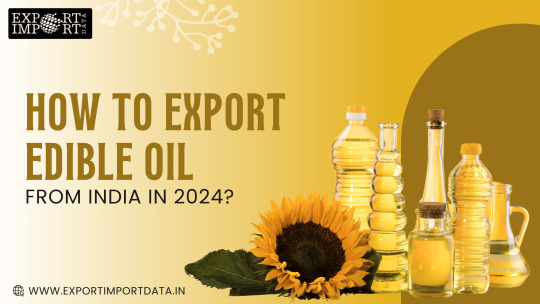
The Importance of Edible Oil in India
Edible oil is a staple in Indian households and culinary traditions, with regional preferences dictating the type of oil used. Northern India favors mustard oil, while coconut oil is commonly used in the south. India stands as the second-largest consumer of edible oil worldwide and is also one of the leading producers. As Indian edible oils gain popularity globally, India has risen as a key exporter of edible oils.
Edible Oil Production in India: An Overview
India's agricultural economy benefits significantly from oilseed production. For the fiscal year 2023-2024, India produced an estimated 39.59 million tons of oilseeds, contributing between 5-6% of the world’s oilseed production. Key oilseed-producing states in India include:
Andhra Pradesh, Gujarat, Karnataka, Tamil Nadu: Groundnut production
Madhya Pradesh, Maharashtra, Rajasthan: Soybean production
Haryana, Rajasthan, Uttar Pradesh, West Bengal: Mustard production
These regions collectively contribute over 95% of the country’s edible oil production.
Growth Projections for India’s Edible Oil Market
The edible oil market in India is projected to grow at a compound annual growth rate (CAGR) of 4.8% from 2022 to 2027, reaching USD 268.9 million. With increasing urbanization, changing food habits, and rising disposable income, demand for high-quality edible oils is set to grow. The Indian edible oil market is expected to expand from 24.7 million metric tons in 2023 to 27.9 million metric tons by 2032.
Key drivers include:
Urbanization: Changing eating habits and food choices
Increased disposable income: Rising preference for premium oils
Processed food demand: Usage of edible oil as a preservative and flavor enhancer
Edible Oil Export Data: India (2023-24)
India exported 7,070 shipments of edible oil from March 2023 to February 2024, with 300 exporters supplying products to 1,798 buyers globally. This marked a 115% increase in shipments compared to the previous year. Notably, India’s exports of oil meals, oilseeds, and minor oils reached 3.46 million tons, valued at Rs 14,609 crores in the fiscal year 2022-2023.
Top export destinations for Indian edible oil include the United States, China, and the Netherlands. In February 2024 alone, India shipped 503 edible oil cargoes, representing a 14% decrease from January 2024 and a 5% drop from February 2023 on a year-over-year basis.
Leading Indian Edible Oil Exporters
India's top edible oil exporters include major companies contributing to the country’s substantial exports:
Adani Wilmar Limited
Agro Tech Foods Ltd. (ConAgra Brands Inc.)
BCL Industries Ltd.
Bunge India Private Limited
Cargill India Private Limited
Emami Agrotech Limited
Gulab Oil And Foods Pvt. Ltd.
Sri Basant Oils Ltd.
AJ-overseas Trade
Shiv Nandi Oil
These companies play a vital role in meeting global edible oil demands, consistently delivering high-quality products.
Top Global Exporters and Importers of Edible Oil
Global demand for edible oil is substantial, with Malaysia leading the way as the largest exporter, followed by Indonesia and the Netherlands.
Top Exporting Countries
Malaysia - USD 1.66 billion
Indonesia - USD 1.52 billion
Netherlands - USD 424 million
Germany - USD 354 million
China - USD 342 million
Top Importing Countries
China - USD 786 million
Netherlands - USD 515 million
United States - USD 325 million
Malaysia - USD 271 million
Germany - USD 225 million
China, the Netherlands, and the United States represent significant markets for Indian edible oil exports, providing Indian exporters with opportunities for trade growth.
How Exportimportdata.in Supports Edible Oil Exporters
For those interested in entering the edible oil export market, platforms like Exportimportdata.in offer comprehensive, real-time data on edible oil exports and imports by country, connecting exporters with genuine buyers worldwide. The platform’s insights allow businesses to optimize trade strategies and make informed decisions.
Final Thoughts
India’s edible oil export market is growing, with significant global opportunities for Indian exporters. By adhering to international standards, maintaining quality, and implementing effective marketing strategies, Indian exporters can capitalize on this expanding sector. Exportimportdata.in offers the resources needed to support this journey, ensuring access to reliable and actionable data.
FAQ
Who are the top edible oil exporters from India?
Key exporters include Adani Wilmar, Agro Tech Foods Ltd., BCL Industries, Bunge India, and Cargill India.
Which countries import the most edible oil?
China, the Netherlands, the U.S., Malaysia, and Germany are among the largest importers.
What is the market growth expectation for edible oils in India?
The market is expected to grow from 24.7 million metric tons in 2023 to 27.9 million metric tons by 2032.
How much edible oil did India export between March 2023 and February 2024?
India exported 7,070 shipments, with a 115% increase compared to the previous year.
For more details on India’s edible oil export statistics and to connect with potential buyers, visit Exportimportdata.in.
#EdibleOilExports#IndianEdibleOil#EdibleOilMarket#IndiaExports#OilseedProduction#GlobalTrade#IndianAgriculture#ExportBusiness#IndianExporters#EdibleOilIndustry#TradeData#ExportImportData#GlobalMarkets#EdibleOilExporters#IndiaToWorld#SustainableExports#EdibleOilDemand#MustardOil#CoconutOil#ExportStatistics#EdibleOilConsumers#FoodIndustry#ExportTrends#ImportExportBusiness#TradeOpportunities
1 note
·
View note
Text
Japan's Export Growth Surges as Global Demand Soars #exportgrowth #globaldemand #Japanexports #Japanimports #tradedata
0 notes
Text
https://emmawil7890.wixsite.com/eximpedia/post/the-essential-guide-to-colombia-s-import-export-data-provider
In the dynamic realm of international trade, success in the Colombian market hinges on accurate information. Employing a Colombia import-export data provider is crucial for navigating global commerce complexities. This blog provider's The Essential Guide to Colombia's Import Export Data Provider, and how businesses can leverage this essential resource to thrive in the vibrant Colombian market.

#export#import#globaltrade#datadriven#marketresearch#internationaltrade#tradedata#exportdata#importdata#exportimportdata#colombia#colombiatradedata#importexportdata#ethiopia#ExportData#Japan#ImportersList
0 notes